Allya P. Koesoema
STEI-ITB
Iftika Rahmi K.
STEI-ITB
Hasna Marhamah A.
STEI-ITB
Elzania Prima D.
STEI-ITB
Dewanti Sholihat G.
STEI-ITB
Astri Maria
STEI-ITB
Abstract
Health technology development has always been an interdisciplinary field involving collaboration between engineers and medical experts combining their respective skills. However, the education of biomedical engineers and medical workers are predominantly still monodisciplinary, with doctors studying in medical schools and biomedical engineers in engineering schools with very little overlap.
This research describes the development of an interdisciplinary case study-based course that involves collaboration between engineering students and medical students. In each case study, students are presented with a medical case or topic, in which engineering and medical students would have to make decisions sequentially or cooperatively to result in a solution or conclusion.
Three pilot modules have been developed for fourth year biomedical engineering students working together with fourth year medical students taking a course on human anatomy and physiology.
Keyword: interdisciplinary education
Introduction
Since 2019, ITB and UNAIR has a collaborative elective program in which UNAIR 4th year medical students (pre-clinical rotation) visits the biomedical engineering program of ITB for an overview of the field of biomedical engineering and interdisciplinary collaboration.
This program is intended to broaden the horizons and connections of both the medical and biomedical engineering students and instill skills for interdisciplinary collaboration.
The program is a 1 month, 4 credits program (56 hours) which consists of a combination of independent classes, integrative interdisciplinary classes, as well as practical experiences and visits. In 2024, 15 UNAIR students visited ITB for 3 weeks, and the project is integrated as a part of this experience.
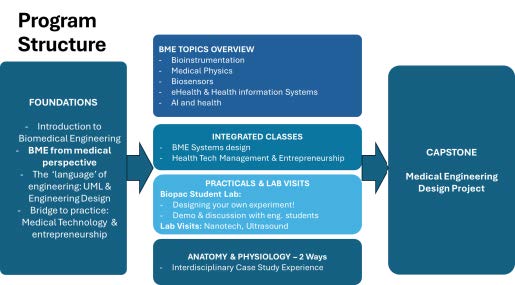
Collaborative Learning Modules
As part of the integrative classroom medical students prepare case studies to teach interactively with the engineering students, in which students are divided into rotating groups. This is aimed to build communication skills and entice interdisciplinary insight between students.
In turn, engineering students present drafts of their engineering design project, in which the medical students act as stakeholders and potential users giving feedback regarding the design.
Finally, an interactive case study was developed on cardiovascular physiology in which medical and engineering students can work collaboratively to solve a healthcare based case using both their background knowledge and collaborative insights.
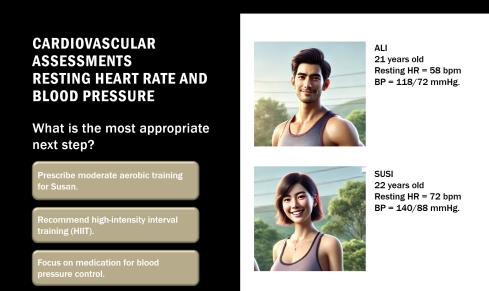
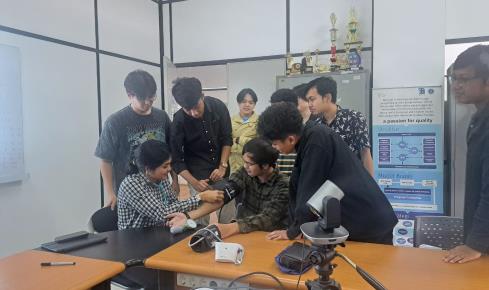
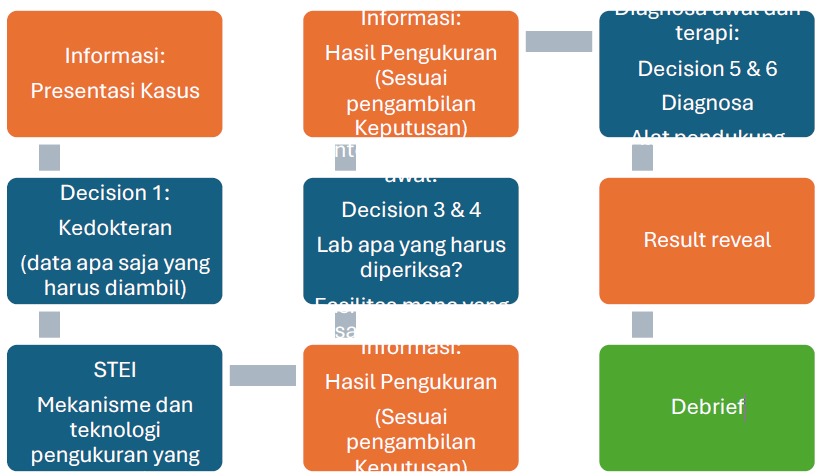
Conclusion
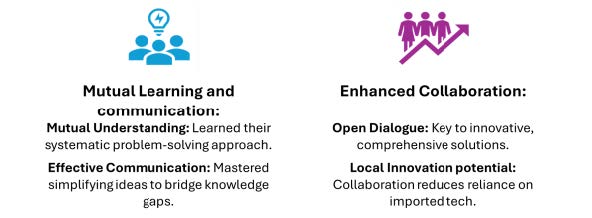
In this project, we have developed a set of interdisciplinary learning module based on collaborative case studies for medical and engineering students. The modules were developed in the context of an Anatomy and Physiology course for Engineers.
It was integrated with an Elective program in which 15 medical School Students visited the Biomedical Engineering Program in the School of Electrical Engineering and Informatics ITB for one month to study an overview of biomedical engineering and be involved in hands-on, collaborative interdisciplinary experiences with biomedical engineering students.
The experience exposed both types of students to interdisciplinary work. Students reported growing mutual learning and communication, as well as enhanced awareness and collaboration through open dialogue, as well as potential future local collaborative innovations.